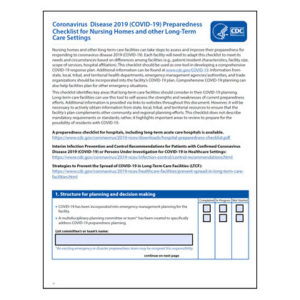Senior Care Leadership: Are You a Workaholic?
Finding (and modeling) a better work-life balance can benefit your entire organization
If balance were easy, we wouldn’t call it balance. Many of us are working way too much and neglecting our hobbies, our families, and our health in pursuit of success at work. But working too much can lead to burnout, which can stifle business growth and success in the long run.
If you’re like many other leaders in the senior care space, you probably have a difficult time drawing the line between work and home sometimes. American society encourages excessively long hours at work and placing business success over personal happiness. But it doesn’t have to be this way. More to the point, if your organization is going to thrive, you need to set a culture of health that employees can follow. Model a good work-life balance and encourage your employees to follow suit. Then reap the benefits of improved employee satisfaction, lower turnover, and increased productivity.
If balance is challenging for you, try implementing these tips and see how your community improves:
Learn to turn it off. If you’re famous for being the first one into the office in the morning, the last one to leave at night, and still answer emails long after everyone else has shut down for the day, it’s quite possible that you’re dealing with a case of workaholism. You have to learn to set boundaries and leave work at work. Taking it home with you only expands the edges of the day and means you’ll never fully unwind and recharge. This advice counts double when you’re on vacation. “Out of office” means out of office.
Set a schedule and stick to it. Part of setting boundaries means you need to set – and communicate – what your hours will be. If you set the expectation that you’re not reachable after 6:30 in the evening, for example, your employees and coworkers will respect that and adjust accordingly. But if you’re always available, that sends a signal that everyone else must always be on, too, which can lead to burnout and resentment among your staff.
Learn to delegate. You should have a second in command or a right-hand person you can trust to support you and step into the breach when you need a break. This means you need to find and train someone or a team of managers who are competent and who you are confident can act in the best interest of the business if you’re not available. Trusting your employees to do the right thing isn’t always easy, but they will thrive when you empower them to be an integral part of the team.
Realize that most “emergencies” are not. Many of us who struggle to disconnect want to always be reachable in case there’s an emergency. But the fact is, most emergencies can wait until tomorrow morning. And for those truly critical, unforeseen events, you can set up a rotating on-call schedule among senior staff. If something goes wrong that truly requires a response from management after hours, the whole team should share in that burden and be available to respond on a rotating schedule.
Turn off notifications. Our smartphones that keep us connected and available all the time have become constant sources of distraction. They ping with every alert and message, and it can be hard to resist checking it each time it makes a sound. But you hold the power to break this cycle by setting up “do not disturb” hours on your phone. This way, no notifications slip through when you want to be unreachable. Consider starting your “DND” hours between 8 p.m. and 7 a.m.
Take several short breaks each day. If you’re famous for working through lunch at your desk each day, consider breaking that habit by taking several small breaks throughout the day. Get up and move away from your work station. Even just a 10 minute break in the middle of the day to walk around the building or pick up lunch somewhere off campus can do you a world of good by changing the scenery and giving you a mental moment to catch your breath.
Prioritize your health. People who struggle with workaholism are more likely to encounter a wide range of potential health problems. Constant stress leads to inflammation throughout the body that can put you at higher risk for a number of chronic diseases, even elevating your risk of cancer or promoting its spread, MD Anderson Cancer Center reports. But you can take back control by making time to exercise, eating right and sleeping enough. See your primary care provider annually for a physical and if you have any chronic medical conditions, be sure you’re keeping tabs on them and following doctor’s orders to stay as healthy as you can for as long as possible.
Prioritize your interests. People who do nothing but work tend to become boring individuals pretty quickly. Your employees and residents will do much better if they’re working with a whole, engaged and passionate person who has interests outside of work. The exact activity you pursue is secondary to the fact that you’re making time for an interest you have. So whether you love horseback riding, gardening, skydiving, racing triathlons, or any of a million other hobbies, make some time every week to engage in those activities. It will lower your stress levels, offer social engagement, and make you a more interesting person that other people want to work for and with.
Talk to someone. At its root, workaholism is a mental health issue. Talking to a mental health provider can help you better understand what’s driving you to overwork. This person can also help you develop healthy coping strategies to get the issue under control.

Elaine K. Howley is a freelance journalist for various publications. An award-winning writer specializing in health, fitness, sports and history, her work has appeared in numerous print and online publications, including U.S. News, AARP.org, espnW, SWIMMER magazine and Atlas Obscura. She’s also a world-record holding marathon swimmer with a passion for animals and beer. Contact her via her website: elainekhowley.com.
Related Articles
Topics: Administration , Executive Leadership , Featured Articles , Leadership , Staffing











